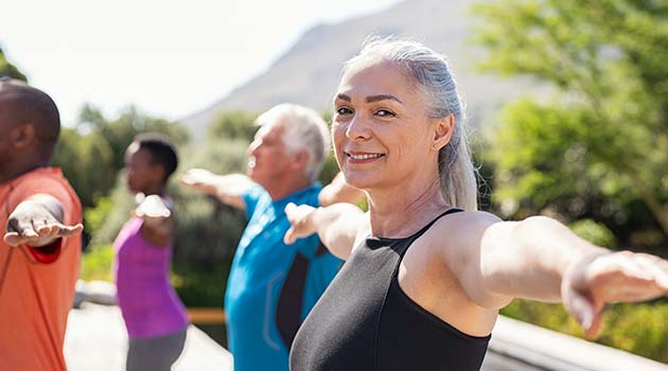 Why is Exercise Important Exercising throughout any stage of your cancer journey is an important part of the fight against cancer. Exercising before treatment can reduce treatment complications and enhance post treatment recovery, exercising during treatment can reduce the amount and severity of treatment related side effects and exercising post treatment can decrease the risk of recurrence, aid in recovery and decrease the amount and severity of treatment related long term side effects. Benefits of Exercising with Cancer Exercising can improve:
Exercising can reduce:
Is Exercising with Cancer Safe In general, exercise is considered safe for those who are or have been through cancer treatment when commenced at an conservative starting point, progressed gradually and modified appropriately to accommodate for treatment and disease related side effects and co-morbidities. Cancer and cancer treatment can affect your ability to exercise in many different ways, including:
It is important to identify and consider these changes in your ability to exercise when starting an exercise program. What Type of Exercise is Best It is recommended to engage in 150+ minutes of moderate intensity activity a week or 75 minutes of vigorous intensity exercise per week. It is also recommended to do 2 resistance training (muscle strengthening) sessions a week . To get additional health benefits, engaging in anywhere up to 300 minutes of moderate intensity activity a week is preferred. Some exercise is good, more is generally better, however everyone starts at different stages. Some general rules for exercising with cancer:
The most important aspect of an exercise program for any cancer fighter or survivor is that their program is individualized to their needs, capacities and preferences. If you are going through or have gone through cancer treatment and have any questions regarding this post and want to begin to exercise, consulting an Exercise Physiologist is a great way to start. Izaac Boylan Accredited Exercise Physiologist
0 Comments
 Breast Cancer & Exercise Recently there has been an announcement about an exciting Australian research project that found that venom from honeybees could rapidly kill aggressive and hard-to-treat breast cancer cells. This is exciting news for our future, but what about people already with breast cancer, and undergoing breast cancer treatment? Here we discuss exercise and it’s benefits for females undergoing treatment. How common is breast cancer? Breast cancer is the most common cancer in women, with more than 13,500 cases diagnosed in Australia each year. One in eight women will be diagnosed with breast cancer by the age of 85. Thankfully almost 90% of those diagnosed will be disease-free five years after their diagnosis and therefore there are nearly 160,000 breast cancer survivors in Australia today. What are the common treatments for breast cancer Common treatments for breast cancer are surgery, chemotherapy, radiotherapy, hormone therapy and specific drug therapies. The side effects of treatments depend on the extent of any surgery, and on the dose and type of adjunct therapy. Some side effects include fatigue, hair loss, an increased percentage of fat and weight gain, nausea, sleep issues, joint and other types of pain, bone loss, ‘chemo brain’ (feeling vague), and fluid build-up that causes swelling in various body parts called lymphoedema. How does exercise help? Exercise can help to counteract some of the common side effects of treatment and last year was recommended by the Clinical Oncology Society of Australia as a standard adjunct therapy for all cancer patients. Read the position statement here. Exercise can help to decrease fatigue, improve body composition, assist in increasing or maintaining bone mineral density, improve mental health and generally helps to improve a person's quality of life. How much exercise? Most of the studies on exercise and cancer have focused on women with breast cancer. As a result of these studies, exercise guidelines have been developed: Females undergoing treatment or post treatment need to work up to moderate intensity exercise, starting with a very low intensity program and what the person can comfortably achieve, and then progress gradually. It is common to have exercise routine lapses due to side effects of treatment, and fatigue, and therefore the program may be re-adjusted up and down over time. A good rule to live by is that something is always better than nothing. The short term goal is to accumulate at least 30 minutes of exercise on at least three days each week - this volume has been found to lead to benefits. Depending on fitness and energy levels of the person, many short sessions may be needed to accumulate at least 30 minutes of daily exercise. Once a person can build up to, and then maintain, at least 30 minutes of exercise per session, then the next goal is to accumulate at least 150 minutes of exercise over one week. Both aerobic and supervised resistance training are safe and beneficial. Helpful tips for females undergoing breast cancer treatment starting an exercise program:
Lisa Parkinson Accredited Exercise Physiologist & Credentialled Diabetes Educator. |
AuthorSLisa Parkinson Archives
July 2024
Categories
All
|

 RSS Feed
RSS Feed